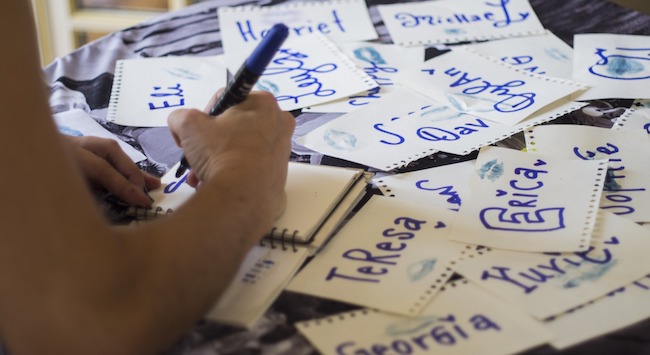When I learned that I was going to be moving to Botswana, I immediately went online to research the country, lifestyle and people. I was so disappointed. Where were all the blogs?! I couldn’t find anyone writing about what life in this country was like! Now that I’m a long-term resident I realise that blogging in Botswana is still very new. I frequently get asked, “How can I become a blogger?” so in order to help others showcase their voices, let’s get down to basics.
Blogs (“web logs”) began in the early 1990’s as online journals for people to publish thoughts and stories. They used to be much more personal to the writer than they are today.
Now, individuals and businesses use blogs to share ideas, instructions, thoughts and musings on topics that they are a rising expert in.
But that’s the key thing: you have to know the subject matter you’re writing about. And you also have to like writing, because if not blogging kind of stinks. A typical blog post will take a seasoned blogger about 3 hours to research, create and promote. That’s a big time commitment if you don’t actually like writing.
In that first Blog Club meet-up, we talked about why you should blog. WHY being the key word. Put another way, what do you want to get out of it? What’s your purpose?
Let me touch on a couple reasons why you should NOT start a blog.
- Money. In my live workshop on blogging I talk a lot about how it’s possible – and preferable – to set your blog up to make money. But that can’t be the number 1 reason why you start blogging. If your primary goal is to make a full-time income from blogging, forget about it. It doesn’t work that way. To generate an income from blogging, you have to enjoy writing and have something valuable to say.
- Traffic & Fame. There are over 2 million blog posts published on the internet every single day. If you write well, have something good to say, and help your readers… then you might get lucky and get a strong following. But that’s not going to make you an internet sensation overnight. It takes consistency and time.
For more about ‘finding your why’, check this out.
Step 1: What do you want to write about?
What are you passionate about? What topic can you offer a unique perspective on? Remember, you need to either know a lot about your topic or document the learning of one. The more clarity you create here the better. You don’t have to have 1 sole niche, but you need to be able to thread many topics together well. Cue point number 2…
Step 2. Readers: who are they?
Who are you writing for, or who do you want to read your blog? What sorts of questions will they be asking – or what needs to they have – that you can answer or solve through your posts? For example, the Family Gems blog is about connecting parents to family-friendly Botswana. Our readers are parents and arriving expats looking for things to do with their families.
If you decided to write about more than one topic, it’s important that your target readers are the same. Otherwise you’ll have a hard time attracting the right people to your blog.
Step 3. Name your blog
I’m not a big fan of blog names that are too long. Your name should be short and sharp, easy to pronounce, and memorable. Learn more about naming your blog here.
Don’t get too attached to your name until you go to register it, because you’ll need to see if it’s available. You’ll figure this out when you go to register it.
Step 4. Choose your platform & hosting
You might have heard of Blogger and Weebly, and those are great blogging platforms. But my ultimate favourite is WordPress. It’s now the most popular content management system and powers 26.3% of the world’s websites.
 WordPress offers a two types of free systems:
WordPress offers a two types of free systems:
- On WordPress.com, you can start a blog named http://yourblog.wordpress.com. This is completely free and a good way to get started and see if blogging is right for you.
- If you’re serious about blogging – and potentially making money from it down the road – you should get a self-hosted blog that’s powered by WordPress.org. This is where you register your own domain name (like http://yourblog.com) and sign up for your own hosting. But it’s a bit more of an investment, starting about P600 a year.
If you’re starting out, register a WordPress.com site and you can always upgrade to a self-hosted domain when you’re ready. Another of my posts talks about how to choose between free and paid options.
Step 5. Add your style with a theme and plugins
A theme is what gives you the look and feel you want. There are thousands of free themes available in various colours, fonts and layouts. Or if you’ve gone with a self-hosted blog you can buy or have a theme designed for you to make it 100% your own.
Plugins will give you extra functionality. With a click of a button you can add extras like newsletter signups, social media feeds, share buttons, and tools to make the blog run better.
Your next steps as a blogger
By this stage, there are only two things to do to be a blogger: Publish and Promote.
Effective blogging uses the power of storytelling to educate or inspire someone. Each post that you write should be relevant and useful to your target readers. The more blog posts you write, the better you’ll become. Soon you’ll find your flair and figure out how to add your personality to your posts.


0 Comments